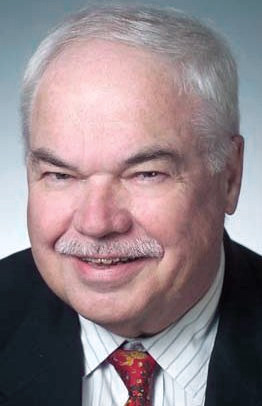/ Featured Blogs
Forward-Thinking Remedies
 Just a year ago, I gave a talk at David Isenberg's 2005 Freedom to Connect conference. I said, essentially, that we should be careful in asking for regulation to protect the net, because the power to protect carries with it the power to constrain. This was a very troubling message for the audience, and the chatroom projected behind me went wild with disapproval. Since then, I've become very concerned about the concentration in broadband service provision in this country, and worried that there won't be any competition for unfettered internet access.
Just a year ago, I gave a talk at David Isenberg's 2005 Freedom to Connect conference. I said, essentially, that we should be careful in asking for regulation to protect the net, because the power to protect carries with it the power to constrain. This was a very troubling message for the audience, and the chatroom projected behind me went wild with disapproval. Since then, I've become very concerned about the concentration in broadband service provision in this country, and worried that there won't be any competition for unfettered internet access.
- By Susan Crawford
- Comments: 0
- Views: 10,504
Powell Warns Net Neutrologists Not to Be Naive
 Just got this email reporting the speech made by former FCC Chairman @ F2C organized by David Isenberg. "Former FCC chairman Michael Powell is up on the stage at the Freedom to Connect conference right now, and he warns the tech elite crowd here not to be naive about the dangers of asking Congress for legislation on Net Neutrality. As he explains..."
Just got this email reporting the speech made by former FCC Chairman @ F2C organized by David Isenberg. "Former FCC chairman Michael Powell is up on the stage at the Freedom to Connect conference right now, and he warns the tech elite crowd here not to be naive about the dangers of asking Congress for legislation on Net Neutrality. As he explains..."
- By James Seng
- Comments: 0
- Views: 15,222
Examining Two Well-Known Attacks on VoIP
VoIP is here to stay. In fact many incumbent telecommunication carriers have started offering VoIP service for sometime and several new VoIP service providers have emerged. Aside from issues such as quality of service, the aspect of security, or lack thereof, is misunderstood by some of the VoIP service providers. This purpose of this article is to discuss two of the most well known attacks that can be carried out in current VoIP deployments.
- By Peter Thermos
- Comments: 0
- Views: 72,361
Interesting Facts About Domain Names
During a database testing, Dennis Forbes makes use of the .com zone file as data sample but he also stumbles upon some unexpected domain name discoveries which he has reported on his site. Dennis Forbes explains: "I recently had a need for a mid-sized amount of real-world data, which I required for testing purposes on low-end hardware (testing and demonstrating some of the new functionality of SQL Server 2005). I wanted something that wasn't confidential, which excluded the easy choice of using business data, and I refrain from using artificial data..."
- By CircleID Reporter
- Comments: 0
- Views: 21,455
ENUM: Mapping the E.164 Number Space into the DNS
 Many communications networks are constructed for a single form of communication, and are ill suited to being used for any other form. Although the Internet is also a specialized network in terms of supporting digital communications, its relatively unique flexibility lies in its ability to digitally encode a very diverse set of communications formats, and then support their interaction over the Internet. In this way many communications networks can be mapped into an Internet application and in so doing become just another distributed application overlayed on the Internet. From this admittedly Internet-centric perspective, voice is just another Internet application. And for the growing population of Voice over IP (VoIP) users, this is indeed the case...
Many communications networks are constructed for a single form of communication, and are ill suited to being used for any other form. Although the Internet is also a specialized network in terms of supporting digital communications, its relatively unique flexibility lies in its ability to digitally encode a very diverse set of communications formats, and then support their interaction over the Internet. In this way many communications networks can be mapped into an Internet application and in so doing become just another distributed application overlayed on the Internet. From this admittedly Internet-centric perspective, voice is just another Internet application. And for the growing population of Voice over IP (VoIP) users, this is indeed the case...
- By Geoff Huston
- Comments: 0
- Views: 33,538
Put Free Expression on the Internet Governance Forum Agenda
 The Internet Governance Project has joined free-expression advocacy organizations Reporters Without Borders and Article 19 to push for including Internet censorship and filtering problems on the agenda of the first meeting of the new Internet Governance Forum (IGF), a multistakeholder deliberation body created by the World Summit on the Information Society...
The Internet Governance Project has joined free-expression advocacy organizations Reporters Without Borders and Article 19 to push for including Internet censorship and filtering problems on the agenda of the first meeting of the new Internet Governance Forum (IGF), a multistakeholder deliberation body created by the World Summit on the Information Society...
- By Milton Mueller
- Comments: 0
- Views: 14,933
Identity, ICANN, and Public Meetings
Ok, so I had a day in Wellington that was not busy with other things so I thought I'd wander over to the ICANN venue and sit in on the PUBLIC Forum... I saw friends on the walk over and we entered the venue, chatting about several different things. They pulled out their badges. I didn't have one. They were admitted, I was denied entrance...
- By Bill Manning
- Comments: 3
- Views: 11,317
Reporting To God
 "GOD, at least in the West, is often represented as a man with a flowing beard and sandals. Users of the Internet might be forgiven for feeling that nature is imitating art — for if the Net does have a god he is probably Jon Postel" (The Economist, Feb. 1997) David W. Maher, Senior Vice President, Law and Policy of Public Interest Registry (PIR) offers his reminiscence of the early days of the Internet and attempts made to restructure the Domain Name System — an article he has entitled 'Reporting to God'.
"GOD, at least in the West, is often represented as a man with a flowing beard and sandals. Users of the Internet might be forgiven for feeling that nature is imitating art — for if the Net does have a god he is probably Jon Postel" (The Economist, Feb. 1997) David W. Maher, Senior Vice President, Law and Policy of Public Interest Registry (PIR) offers his reminiscence of the early days of the Internet and attempts made to restructure the Domain Name System — an article he has entitled 'Reporting to God'.
- By David Maher
- Comments: 3
- Views: 18,550
MicroID: A Microformat for Claiming Ownership
 This morning I learned about MicroIDs from Doc Searls. Jeremy Miller has proposed MicroIDs as a microformat that "allows anyone to simply claim verifiable ownership over their own pages and content hosted anywhere." A MicroID is a hash of two hashed values. The first is a verified communication ID. The second is the URI of the site that the content will be published on. You end up with a unique, long string of gibberish that can be put in the header of a Web page or even wrapped around one part of a page...
This morning I learned about MicroIDs from Doc Searls. Jeremy Miller has proposed MicroIDs as a microformat that "allows anyone to simply claim verifiable ownership over their own pages and content hosted anywhere." A MicroID is a hash of two hashed values. The first is a verified communication ID. The second is the URI of the site that the content will be published on. You end up with a unique, long string of gibberish that can be put in the header of a Web page or even wrapped around one part of a page...
- By Phillip J. Windley
- Comments: 1
- Views: 11,960
Testing IDNs
 Internationalized (non-ascii) domain names (IDN) are a key issue for ICANN. Yesterday, the Board completed two days of workshop presentations about various matters (IANA, security, GAC relationships), and we were briefed on the IDN testing that is planned. I thought it might be useful to make clear the distinction between the tests (which are testing mechanisms for IDNs) and the very difficult policy questions that confront ICANN. As several people explained to me yesterday, they're different.
Internationalized (non-ascii) domain names (IDN) are a key issue for ICANN. Yesterday, the Board completed two days of workshop presentations about various matters (IANA, security, GAC relationships), and we were briefed on the IDN testing that is planned. I thought it might be useful to make clear the distinction between the tests (which are testing mechanisms for IDNs) and the very difficult policy questions that confront ICANN. As several people explained to me yesterday, they're different.
- By Susan Crawford
- Comments: 2
- Views: 17,309